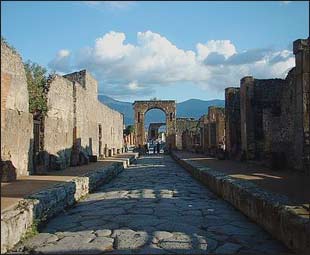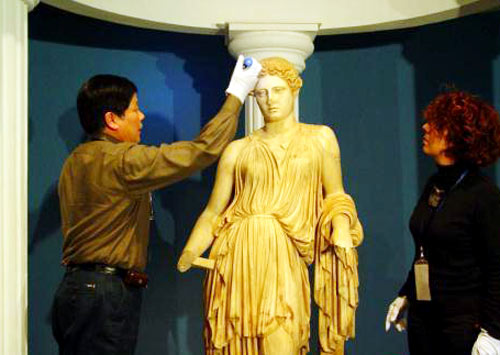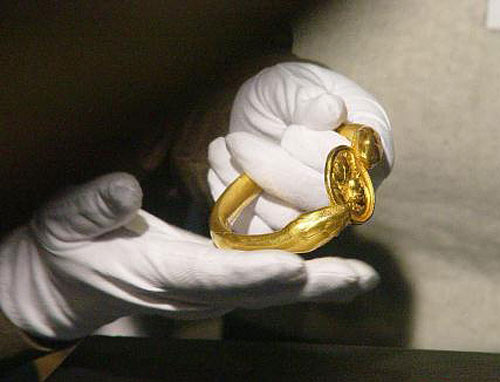| Tools: Save | Print | E-mail | Most Read |
| Glory of Pompeii Rises from Ashes in Beijing |
| Adjust font size: |
All those present held their breath as Italian archaeologist Giovanni Girella knelt to lift a plaster cast of a child out of a wooden box before holding it in his arms. The relic, among others, arrived in Beijing yesterday for the first exhibition of its kind in the Chinese capital. The 6-year-old child had been buried beneath meters of volcanic ash with his brother and parents in his family house for 1,800 years. He was uncovered in the 19th century during the excavation that has been ongoing since the city's accidental discovery in 1748. Casts were made of the family of four by filling the cavities in the ashes with liquid chalk, as were 2,000 more of the 20,000 victims from the eruption of Mount Vesuvius on August 24, 79 AD. Now, they will be displayed along with another family of eight and a dog, and more than 480 pieces of artwork at the Millennium Art Museum of the China Millennium Monument.
The exhibition, The End of Pompeii: Stories from a Volcano Eruption, will be open from February 15 to May 7, and "provide an extraordinarily detailed insight into the life of a city at the height of the Roman Empire," said Wang Limei, curator of the museum. It is also "the first time that relics from Pompeii will be seen in China," said Stefania Giudice, fresco conservationist with the Naples National Archaeological Museum, who accompanied the first batch of the relics. The Pompeian art on display is on loan from the Naples museum and the Pompeii Archaeological Administration in Italy. It includes Roman sculptures, jewels, and well-preserved frescos. The frescos, which shed light on everyday life in Pompeii, have been hailed as a major advance in art history with the innovation of the Pompeian Styles, featuring luxury and eroticism. One example is a 610-gram gold bracelet, which used to be worn on the upper arm of the child's mother. Snake shaped, it has at the mouth a gold plate delicately carved with the image of Selene, the Roman Goddess of the Moon, and is embedded with seven jewels symbolizing stars above her head.
(China Daily February 7, 2007)
|
| Tools: Save | Print | E-mail | Most Read |
 |
| Related Stories |
|
|
Product Directory China Search |
Country Search Hot Buys |





